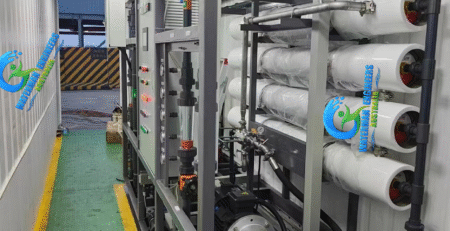The Impact of pH on the Efficiency of Precious Metal Recovery Processes
Rare and valuable metals like gold, silver and platinum group metals are highly prized for their scarcity and many uses in different industries. The process of getting these precious metals from ores and other sources is complicated and involves several stages. One important factor that affects how well this process works is the pH level.
The Significance of pH in Precious Metal Recovery
pH is a measure of the acidity or alkalinity of a solution. It is a logarithmic scale ranging from 0 to 14, where pH 7 is considered neutral, values below 7 are acidic, and values above 7 are alkaline. pH plays a critical role in various chemical reactions and is an essential parameter in the field of metallurgy and precious metal recovery.
Precious metal recovery processes, such as precipitation and solvent extraction, rely on specific chemical reactions to separate and extract the valuable metals from the ore or solution. pH affects the stability of the chemical species involved in these reactions, ultimately influencing the overall efficiency of the recovery process. Understanding and controlling pH is crucial to optimize precious metal recovery and maximize yield.
The precious metals are often recovered from the solution through precipitation. Precipitation involves the addition of a chemical agent that causes the metal ions to form solid particles or compounds that can be easily separated. pH plays a vital role in controlling the precipitation process. Adjusting the pH to the appropriate range ensures the formation of desired precipitates and minimizes the formation of impurities.
Solvent extraction is another common method used for precious metal recovery. In this process, an organic solvent is used to selectively extract the target metals from the solution. pH affects the distribution of metal ions between the aqueous and organic phases in the solvent extraction process. By adjusting the pH, the extraction efficiency can be optimized, ensuring maximum recovery of precious metals.
pH is an indication of the concentration of hydrogen ions in a solution. It is a logarithmic quantity and each pH value represents a tenfold change in the hydrogen ion concentration. Every living system needs to maintain a balanced pH in order to function correctly. The human body does this through the kidneys, which excrete hydrogen ions or reabsorb them.
pH in Ion Exchange Technique
Ion exchange is a commonly used technique for the recovery of precious metals. It involves the exchange of metal ions between a solid resin and a solution. pH has a direct impact on the ion exchange process by influencing the selectivity and loading capacity of the resin.
Effect of pH on Selectivity: The pH of the solution affects the charge of metal ions, thereby influencing their affinity for the ion exchange resin. By adjusting the pH, the selectivity of the resin towards specific metals can be optimized. For example, in gold recovery, a slightly acidic pH range is often preferred to enhance the selectivity of the resin towards gold ions.
Loading Capacity: The pH of the solution also affects the loading capacity of the ion exchange resin. pH adjustments can influence the competition between metal ions and other ions present in the solution for binding sites on the resin. By optimizing the pH, the loading capacity of the resin can be maximized, leading to higher recovery yields.
pH in Solvent Extraction Technique
Solvent extraction is another widely used technique for the recovery of precious metals. It involves the transfer of metal ions from an aqueous solution to an organic solvent phase. pH plays a critical role in solvent extraction by influencing the distribution and extraction efficiency of the metal ions.
Metal Ion Extraction: The pH of the aqueous solution affects the speciation and solubility of metal ions. Different metal species have varying solubilities at different pH ranges. By adjusting the pH, the targeted metal ions can be brought into optimal speciation that favors extraction into the organic phase.
Contaminant Extraction: pH adjustments can also influence the extraction of impurities or unwanted metals that might interfere with the recovery process. By optimizing the pH, the extraction selectivity can be enhanced, ensuring a higher purity of the recovered precious metals.
pH in Precipitation Techniques
Precipitation is a common method used to recover precious metals from solution by forming insoluble compounds. pH has a significant impact on the formation and characteristics of the precipitates, thereby affecting the efficiency of the precipitation process.
Precipitate Formation: The pH of the solution plays a crucial role in the formation of desired precipitates. Different metal ions have different pH dependencies for precipitation. By adjusting the pH to the appropriate range, the formation of pure and well-defined precipitates can be achieved.
Purity of Precipitates: pH adjustments also influence the purity of the precipitates by controlling the co-precipitation of impurities. Proper pH control ensures the selective precipitation of the desired metal ions while minimizing the incorporation of unwanted impurities into the precipitates.
To achieve optimal precious metal recovery, continuous pH monitoring and control are vital. Implementing robust pH monitoring systems and automated control mechanisms can help maintain the desired pH conditions throughout the process. This ensures consistency and allows for immediate adjustments if deviations occur.









